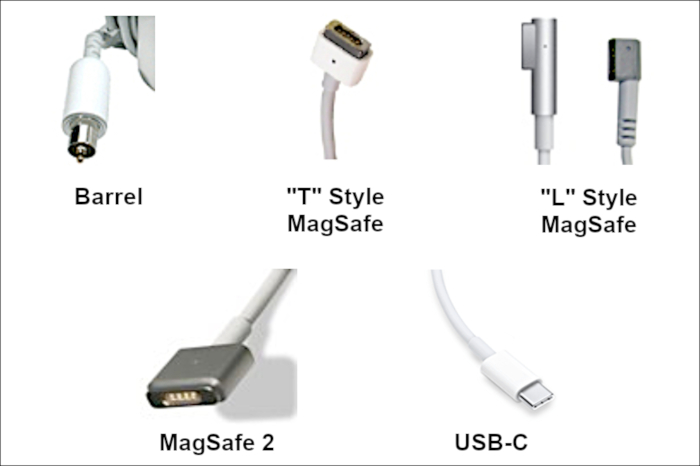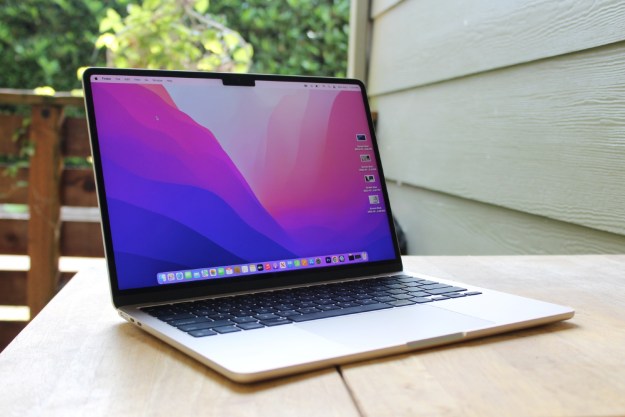Not being able to use your MacBook for any reason can be frustrating and even scary. So when it stops charging, you might jump to the conclusion that your MacBook’s battery or other hardware is to blame.
It’s important to look at every possibility before assuming the worst. In this guide, we’ll look at the different reasons why your MacBook charger may stop working. Then, we’ll walk you through possible solutions for each problem.
Make sure the charger isn’t malfunctioning

When first encountering charging issues, make sure the power adapter isn’t the underlying problem. Switch to a different outlet that you know works, and check the charger’s LED indicators — many Mac chargers have some form of these — to see if they respond. You don’t want to worry yourself over a faulty outlet.
If you get no response, consider borrowing an identical charger (if possible). You can also head to an Apple Store or an Apple Authorized Service Provider and ask if you can test your unit.
If your MacBook turns on and starts charging with a different cable, your charger is likely the culprit. If your MacBook still fails to respond, you probably have a problem with the battery or other hardware, and it’s time to take a different approach.
This is also the perfect time to check compatibility. The evolution of Apple’s MacBook lineup over the years introduced a handful of different power connectors and wattages. While you can acquire power adapters that output higher power than what your MacBook requires, using an adapter that doesn’t deliver enough power can lead to performance issues.
If you bought a charger or a used or refurbished Mac online and your charger doesn’t work upon first use, make sure you have a compatible charger type.
Apple has more information about the different power adapter connectors that work with old and new MacBooks and how you can get the correct adapter, if necessary. Here are the five major connection types:

Clean it out
After confirming that the charger is your issue, check for dirt in all ports and connectors. A layer of dust or grime may be present, preventing the charger from making a proper electrical connection. Also, beware of invisible, sticky layers that may be the real problem.
To clean, get a cloth or cotton swab and remove any dirt you see. You can also use a quick spritz of isopropyl alcohol on the connector, but make sure to dry the charger thoroughly before using it again.
Check for physical damage
A common cause of charger failure is physical damage. There are two types:

Prong and blade damage: Examine all prongs, blades, and other metal tips used by your charger. If a prong or blade is loose or missing, your MacBook won’t receive enough power, if any at all. Physical damage can cause electrical fires, so stop using your charger and get a replacement immediately.

Strain relief: Strain relief refers to the head of the charger, which plugs into the MacBook, slowly disconnecting from the main cable. Caused by wear and tear, this issue appears more often on older connectors than power adapters with L-style or other MagSafe connectors.
If the LED indicator lights seem to switch on and off based on the angle of the charger, you could have a short. Examine the connector’s end for signs of cable damage, exposed wires, or wear on the insulating covering. If you see evident signs of damage, it could be dangerous; get a replacement soon.
Make sure your charger isn’t overheating
If the large, boxy part of your charger remains hidden under blankets, sits in the hot sun, or otherwise resides in a heated area, it may overheat. Adapters are very sensitive to heat, which is why Apple installs automatic shut-off functions for when they get too hot. That means your MacBook will never charge if you keep charging it in a hot environment. Make sure your adapter is always in the shade and well-ventilated.
Check for line noise

Alternating currents move in cycles, but between the distance electricity must travel and the electromagnetic interference of nearby devices, these cycles can get exposed to serious distortion — that is, until the electricity essentially breaks down into a format your laptop battery simply can’t use. Check to see if you have a line noise problem by unplugging your charger and letting it rest for 60 seconds or so. Then, plug it back in and see if it works.
If the charger seems fine again, you probably had a problem with ground noise building up until your adapter shut down automatically to protect itself. Try using your computer away from other appliances, especially refrigerators and fluorescent lights, which are notorious for causing line noise troubles. Your adapter’s overvoltage protection feature is merely a safety precaution, and it is intended to increase the lifespan of your device.
Reset your battery and settings

If you’re still having trouble figuring out what’s going wrong, don’t lose hope. There’s one more thing you can do before you give up and take your MacBook to one of the pros. This possible quick-fix is associated with your computer’s specific settings rather than the adapter itself. We highly suggest trying out the following two solutions, as they may just be the answer to your problem (even if it’s hidden):
- Reset your battery. This is very simple on older MacBook versions. All you need to do is remove the battery, allow it to sit idle for about a minute or more, and then re-insert it. Sadly, you cannot take the battery out using the same technique on the latest MacBooks. So, if this applies to you, you’ll need to skip to the next step.
- Reset your computer’s PRAM and SMC. These are in-house frameworks and settings that dictate how your MacBook controls power levels, volume amplification, and other essential settings. If these settings begin to malfunction, it can create severe concerns. Check out our guide on how to quickly reset PRAM and SMC on your Mac if you’re interested in learning more.
Editors' Recommendations
- The 5 best MacBooks for video editing in 2024
- The best MacBook to buy in 2024
- Best refurbished MacBook deals: Get a MacBook Air for $140 and more
- Best MacBook deals: Get an Air for $605 and save on M3 MacBook Pro
- Best Apple deals: Save on AirPods, Apple Watch, iPad, MacBook




